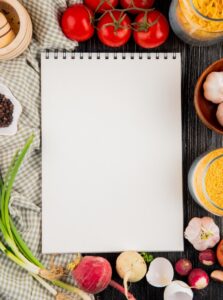
As culinary traditions hold a special place in family heritage, preserving treasured recipes becomes a way to pass down not just flavors but stories and memories. Beyond the conventional methods, discover uncommon ways to ensure your family recipes withstand the test of time, creating a culinary legacy that transcends generations.
- Audio Recipe Recordings: Narrating the Culinary JourneyCapture the essence of family recipes by creating audio recordings. Narrate the steps, share anecdotes, and convey the passion behind each dish. This unique approach allows future generations to hear the voices of those who crafted the recipes, adding a personal touch to the culinary legacy.
- Recipe Quilts: Stitching Culinary HeritageTransform family recipes into a tangible and artistic creation by incorporating them into a recipe quilt. Embroider or print the recipes onto fabric squares, creating a beautiful quilt that not only keeps the recipes safe but also serves as a visually appealing family heirloom.
- Culinary Scrapbooking: A Visual Feast of MemoriesCombine the art of scrapbooking with culinary tradition. Create visually appealing scrapbooks that include not only the recipes but also photographs, handwritten notes, and mementos related to each dish. This creative approach turns preserving recipes into an immersive visual experience.
- Recipe-Inspired Artwork: Culinary CanvasesCommission or create artwork inspired by family recipes. Illustrate the ingredients, depict the cooking process, or even paint the final dish. Hang these culinary canvases in the kitchen, turning the walls into a gallery that celebrates the family’s culinary heritage.
- Digital Recipe Animation: Bringing Recipes to LifeInfuse a touch of technology by creating digital animations of the cooking process. Use animation software to visualize the step-by-step preparation of each recipe, adding a dynamic and engaging element to the preservation of culinary traditions.
- Recipe Shadow Boxes: Three-Dimensional Culinary DisplaysConstruct shadow boxes for each family recipe, incorporating physical elements such as dried herbs, spices, or kitchen tools associated with the dish. These three-dimensional displays provide a multisensory experience, connecting visual and tactile elements with the culinary heritage.
- Recipe Memory Jars: Capturing Fragrances of the PastCreate memory jars for each recipe, placing aromatic ingredients or spices associated with the dish into decorative jars. Seal them well to preserve the scents, allowing future generations to experience the fragrances that evoke memories of family gatherings and shared meals.
- Culinary Storytelling Podcasts: Oral Narratives of FlavorTransform family recipes into captivating storytelling podcasts. Share not only the ingredients and steps but also the stories, memories, and emotions associated with each dish. This auditory experience adds a layer of depth to the preservation of family culinary heritage.
Conclusion
Preserving family recipes goes beyond traditional methods, offering creative and unconventional ways to ensure that culinary legacies endure. By incorporating elements of art, technology, and personal narratives, these uncommon approaches transform the act of passing down recipes into a rich and multi-sensory experience that resonates across generations.
